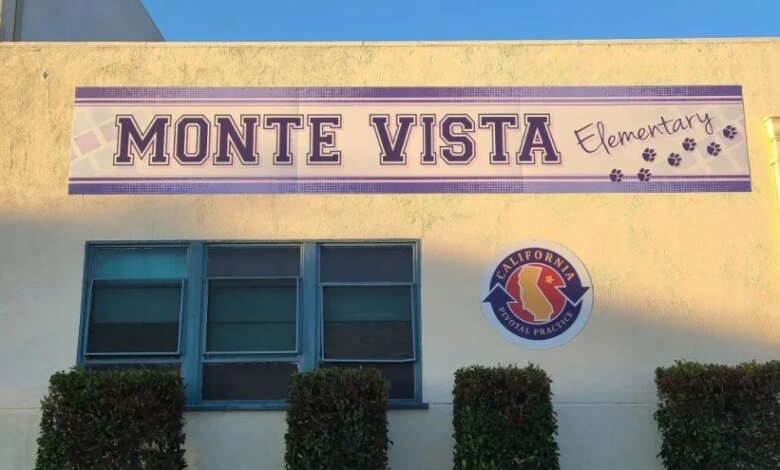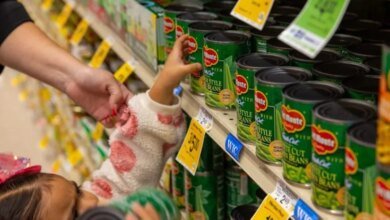How My California School Turned A Corner

How My California School Turned A Corner
Get stories like this delivered straight to your inbox.Sign up for The 74 Newsletter
Get و stories و like – تفاصيل مهمة
When I first arrived at Monte Vista Elementary over 20 years ago, it was evident that the school was full of dedicated students and teachers. But the numbers told a different story.
Many children entered with limited early literacy and numeracy skills, and as a result, overall performance ranked near the bottom of the district and toward the lower end statewide. The students were capable and eager to learn, but they needed a consistent approach with instruction rooted in strategic thinking to help them thrive.
Recognizing the stakes, three years ago the school underwent a complete overhaul, and the change has been remarkable. Monte Vista has seen math proficiency rise from 29% to 55%and English Language Arts proficiency climbed from 40% to 63% on the Smarter Balanced Assessment.
Here are three ways Monte Vista Elementary changed its trajectory and saw meaningful growth.
the و and و to – تفاصيل مهمة
First and foremost, change began by reimagining the definition of leadership. Rather than relying on top-down directives, the school adopted a model built on trust, collaboration and shared purpose. The goal was simple but powerful: empower teachers to make instructional decisions and position them as partners in driving improvement.
Teacher leadership teams and data-driven professional learning communities were established, keeping student performance at the center of every conversation. These teams analyzed data, identified gaps and collectively determined next steps, ensuring that professional development and instructional strategies were grounded in real classroom needs.
Teacher leaders visited classrooms across grade levels to identify educators’ strengths, growth areas and opportunities to refine practice. The feedback was shared with the full staff, and teachers collaborated to design targeted action plans — whether that meant adjusting curriculum, securing supplemental resources or carving out additional planning time.
Peer observations further deepened this culture of collaboration. Model teachers opened their classrooms so colleagues could see effective strategies in action and reflect together on what worked.
and و to و Teacher – تفاصيل مهمة
This kind of teacher-to-teacher learning proved far impactful than traditional training approaches. It built shared ownership for student success, professional trust and a collective commitment to doing whatever it takes to improve student outcomes.
The second change came about when school leaders confronted an uncomfortable truth: The data didn’t add up. Internal assessments suggested strong growth, yet students’ performance on state tests told a different story. Misalignment between those results and Smarter Balanced scores signaled a deeper issue: Students could complete assignments that relied on following set steps accurately, but they struggled when asked to apply concepts or reason through complex problems.
Classroom instruction needed to mirror the cognitive rigor students would encounter on the Smarter Balanced exam. To bridge that gap, the school implemented a digital learning platform that provided real-time feedback, question-by-question performance data and types of questions designed to prepare students for the deeper thinking required on state assessments.
Teachers could now see in-the-moment how students were reasoning through problems, identify misconceptions immediately and adjust instruction before small gaps became larger ones. The platform’s dashboards made error analysis part of daily practice, revealing not just what students missed, but why. Educators began using this insight to reteach key concepts, group students flexibly and design interventions that targeted specific learning gaps.
students و on و and – تفاصيل مهمة
Equally important, the tool reframed assessment as learning. Students were no longer passively tested — they were actively reflecting on their own thinking. They learned to articulate their reasoning, analyze their mistakes and approach challenging problems with confidence.
Integrating this technology also deepened the staff’s collective approach to teaching. With clear evidence at their fingertips, teachers collaborated around patterns in student learning, refining both their questions and their approaches to conceptual teaching. Over time, this focus on strategic approaches to problem-solving — rather than procedural repetition — became part of the school’s DNA.
The result was a powerful alignment between classroom learning and assessment performance. Students weren’t just better test-takers; they were stronger thinkers, capable of transferring understanding across subjects and demonstrating mastery under pressure.
The third component was engaging families through listening. Parents are involved through advisory committees that review data, provide input and offer feedback that is incorporated into achievement plans for English learners, students with special needs and gifted students.
and و to و their – تفاصيل مهمة
Over time, the school’s data culture has evolved from one focused on accountability to one centered on celebration — viewing results as a story of growth rather than a measure of failure. Each initiative is anchored in evidence, collaboration and recognition of progress, no matter the scale, ensuring that insights gained from data reach beyond the classroom. Family literacy and numeracy nights, “coffee with the principal” meetings and community events all connect data-driven academic progress, behavior and culture into a coherent framework that invites families to see and share in student success.
Monte Vista shows that regardless of students’ backgrounds or starting points, when teachers collaborate around shared goals, incorporate strategic thinking and prioritize family involvement, educational outcomes change. The focus moving forward is to sustain the assessment-driven cycles that have guided progress, deepen student ownership of learning and maintain a commitment to equity, excellence and the shared belief that our students will succeed.
that و and و of – تفاصيل مهمة
Did you use this article in your work?
We’d love to hear how The 74’s reporting is helping educators, researchers, and policymakers.Tell us how
how و
و We’d – تفاصيل مهمة
Disclaimer: This news article has been republished exactly as it appeared on its original source, without any modification.
We do not take any responsibility for its content, which remains solely the responsibility of the original publisher.
Disclaimer: This news article has been republished exactly as it appeared on its original source, without any modification.
We do not take any responsibility for its content, which remains solely the responsibility of the original publisher.
Author: uaetodaynews
Published on: 2025-11-18 21:08:00
Source: uaetodaynews.com





